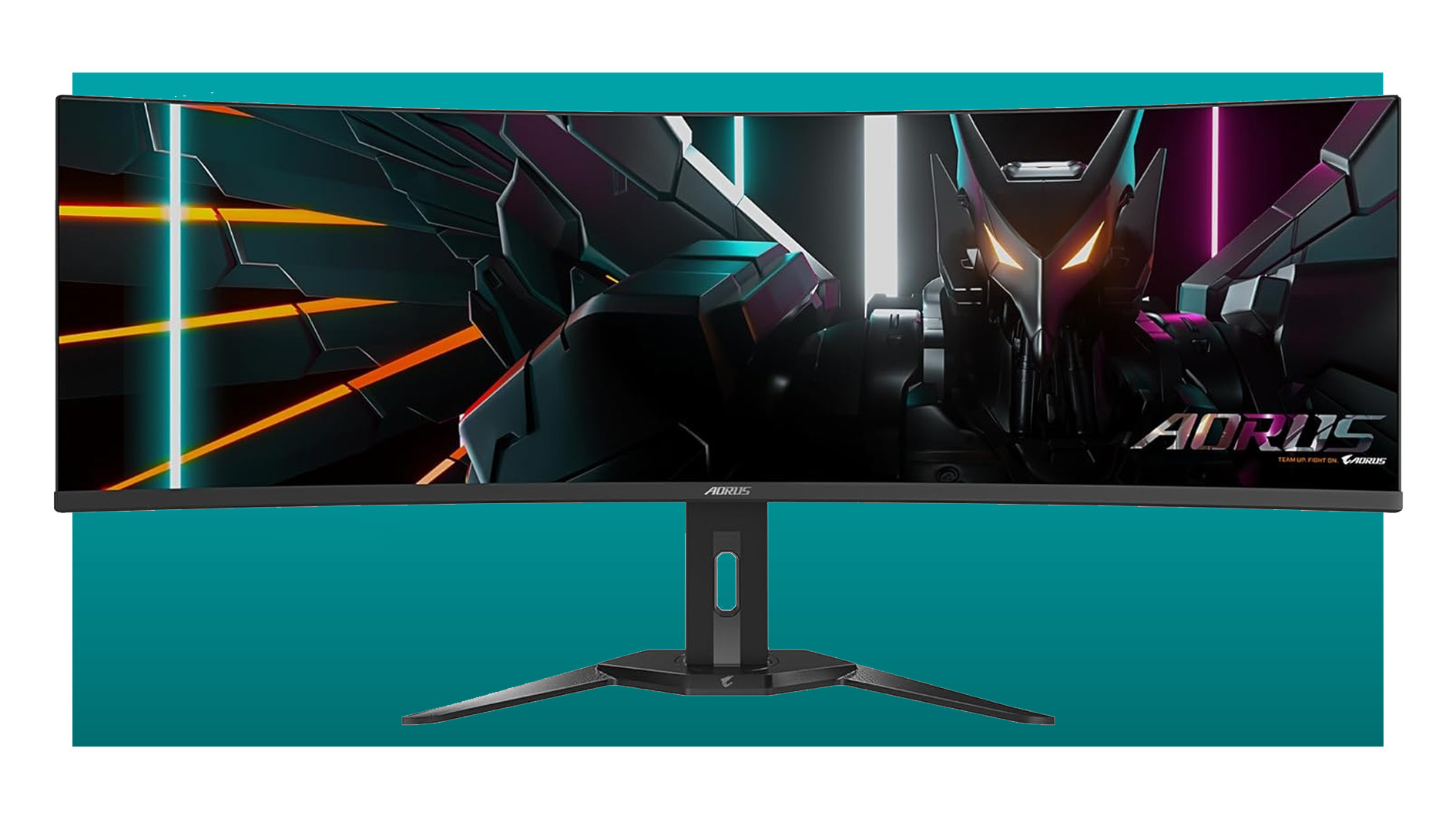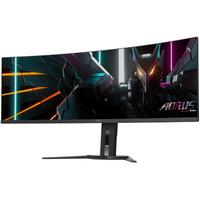This mega-ultrawide OLED gaming monitor was too hot to handle at MSRP but it's just cooled off to $1,000
That's a pretty sharp price drop for a gaming monitor that's not been out for long.

Gigabyte Aorus CO49DQ | 49-inch | QD OLED | 5120 x 1440 | 144 Hz | 0.03 ms response time | $1,099.99 $999.99 at Amazon (save $100)
Just mere months ago this extreme gaming monitor was going for $1,300. Now Gigabyte is practically giving it away at $1,000. Just joking, I'm not that out of touch. I couldn't afford this gaming monitor myself, it's a helluva lot of money, but you won't find a cheaper 49-inch QD OLED panel from Samsung or Asus just yet.
A 49-inch OLED gaming monitor, it doesn't get much better than this. I'm talking immersion out the wazoo, but even in very real terms, you're looking at a 5120 x 1440, 144 Hz, QD-OLED panel stuffed into this monitor, which offers an unbeatable 0.03 ms response time.
What's more, this Gigabyte Aorus CO49DQ is discounted down to $1000 at Amazon. Now, that's still a lot of money, but compared to some similar 49-inch QD OLED gaming monitors from Samsung and Asus, it's currently more affordable than either.
We've reviewed the Samsung Odyssey OLED G9 and Asus ROG Swift OLED PG49WCD, the latter I did personally. However, we've not yet had a chance to look at the Gigabyte ourselves. These monitors share many similarities, including the same Samsung-made OLED panel, so many of the things that I and my colleague Jeremy loved about those two nearly-matching monitors are largely true of the Aorus CO49DQ as well.
That 49-inch screen, for starters. There's no escaping the engulfing gameplay of anything you play writ large on this size screen. Yet the important thing is the 5120 x 1440 resolution isn't actually as demanding on your hardware as it may appear. You'll need a high-end graphics card, no doubt about that, but you can get solid frame rates up to this screen's 144 Hz refresh rate (depending on the game, of course) with most 4K capable cards.
The OLED screen is most impressive while gaming. In my experience with the Asus 49-inch OLED, I found it produces some of the most vivid and engrossing images I've experienced outside of the cinema. The experience on this OLED shouldn't be dissimilar from those we've tested, either, though it could be tweaked as manufacturers often set up panels slightly differently.
Speaking of which, the Gigabyte Aorus FO32U2, a recently released 32-inch OLED gaming monitor, uses a much warmer color temperature for the screen than the similar Alienware and MSI panels. That could also be the case with this larger 49-inch Gigabyte model, too, though I can't say for sure. It wasn't a dealbreaker, anyway, we just prefer a blueish tint to our OLEDs.
Also during my time with the Asus OLED, I was painfully aware of text fringing, which happens as a result of the abnormal subpixel layout used by OLED monitors. You get used to it, but if you work with a lot of text like I do it does take the shine off the OLED panel a little. That will definitely still exist on this Aorus, as it uses the exact same panel with the same subpixel layout.
Though for a massively ultrawide gaming monitor, with an OLED panel no less, this is a fine price indeed. Definitely worth a look if you're in the market and won't settle for something less than absurd.
Keep up to date with the most important stories and the best deals, as picked by the PC Gamer team.

Jacob earned his first byline writing for his own tech blog. From there, he graduated to professionally breaking things as hardware writer at PCGamesN, and would go on to run the team as hardware editor. He joined PC Gamer's top staff as senior hardware editor before becoming managing editor of the hardware team, and you'll now find him reporting on the latest developments in the technology and gaming industries and testing the newest PC components.


